Carles Navarro Manchón
Proximal Policy Optimization for Integrated Sensing and Communication in mmWave Systems
Jun 27, 2023Abstract:In wireless communication systems, mmWave beam tracking is a critical task that affects both sensing and communications, as it is related to the knowledge of the wireless channel. We consider a setup in which a Base Station (BS) needs to dynamically choose whether the resource will be allocated for one of the three operations: sensing (beam tracking), downlink, or uplink transmission. We devise an approach based on the Proximal Policy Optimization (PPO) algorithm for choosing the resource allocation and beam tracking at a given time slot. The proposed framework takes into account the variable quality of the wireless channel and optimizes the decisions in a coordinated manner. Simulation results demonstrate that the proposed method achieves significant performance improvements in terms of average packet error rate (PER) compared to the baseline methods while providing a significant reduction in beam tracking overhead. We also show that our proposed PPO-based framework provides an effective solution to the resource allocation problem in beam tracking and communication, exhibiting a great generalization performance regardless of the stochastic behavior of the system.
Device-Agnostic Millimeter Wave Beam Selection using Machine Learning
Nov 22, 2022Abstract:Most research in the area of machine learning-based user beam selection considers a structure where the model proposes appropriate user beams. However, this design requires a specific model for each user-device beam codebook, where a model learned for a device with a particular codebook can not be reused for another device with a different codebook. Moreover, this design requires training and test samples for each antenna placement configuration/codebook. This paper proposes a device-agnostic beam selection framework that leverages context information to propose appropriate user beams using a generic model and a post processing unit. The generic neural network predicts the potential angles of arrival, and the post processing unit maps these directions to beams based on the specific device's codebook. The proposed beam selection framework works well for user devices with antenna configuration/codebook unseen in the training dataset. Also, the proposed generic network has the option to be trained with a dataset mixed of samples with different antenna configurations/codebooks, which significantly eases the burden of effective model training.
Location- and Orientation-aware Millimeter Wave Beam Selection for Multi-Panel Antenna Devices
Mar 22, 2022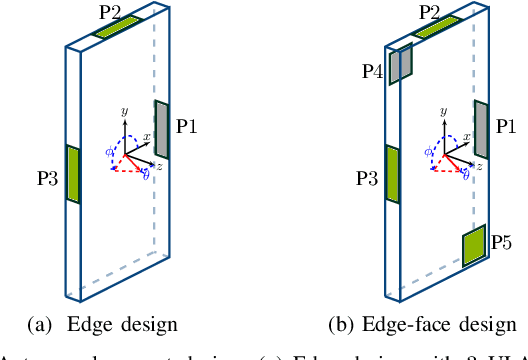
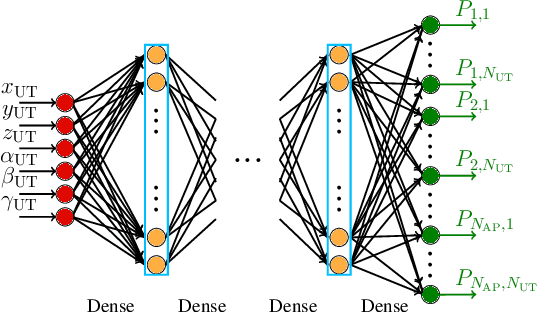
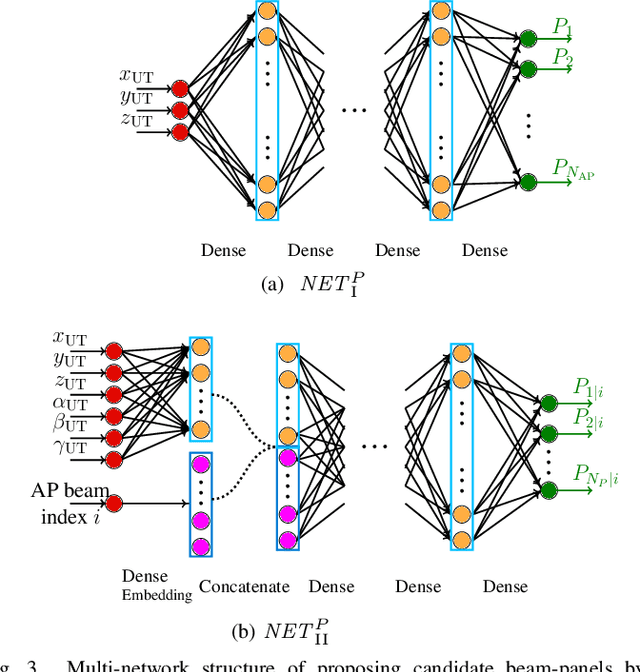
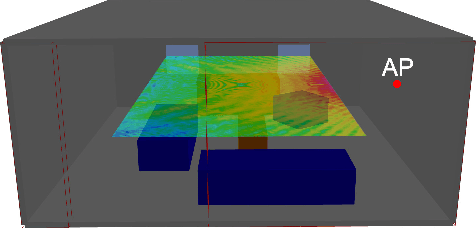
Abstract:While initial beam alignment (BA) in millimeter-wave networks has been thoroughly investigated, most research assumes a simplified terminal model based on uniform linear/planar arrays with isotropic antennas. Devices with non-isotropic antenna elements need multiple panels to provide good spherical coverage, and exhaustive search over all beams of all the panels leads to unacceptable overhead. This paper proposes a location- and orientation-aware solution that manages the initial BA for multi-panel devices. We present three different neural network structures that provide efficient BA with a wide range of training dataset sizes, complexity, and feedback message sizes. Our proposed methods outperform the generalized inverse fingerprinting and hierarchical panel-beam selection methods for two considered edge and edge-face antenna placement designs.
A Deep Learning Approach to Location- and Orientation-aided 3D Beam Selection for mmWave Communications
Oct 13, 2021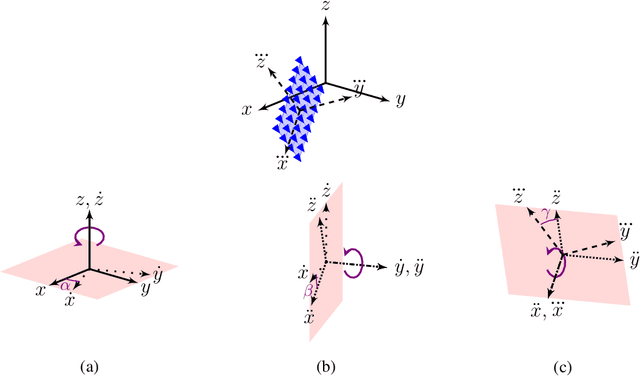

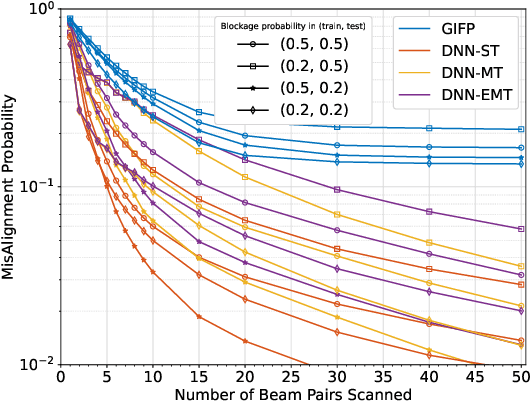

Abstract:Position-aided beam selection methods have been shown to be an effective approach to achieve high beamforming gain while limiting the overhead and latency of initial access in millimeter wave (mmWave) communications. Most research in the area, however, has focused on vehicular applications, where the orientation of the user terminal (UT) is mostly fixed at each position of the environment. This paper proposes a location- and orientation-based beam selection method to enable context information (CI)-based beam alignment in applications where the UT can take arbitrary orientation at each location. We propose three different network structures, with different amounts of trainable parameters that can be used with different training dataset sizes. A professional 3-dimensional ray tracing tool is used to generate datasets for an IEEE standard indoor scenario. Numerical results show the proposed networks outperform a CI-aided benchmark such as the generalized inverse fingerprinting (GIFP) method as well as hierarchical beam search as a non-CI-based approach. Moreover, compared to the GIFP method, the proposed deep learning-based beam selection shows higher robustness to different line-of-sight blockage probability in the training and test datasets and lower sensitivity to inaccuracies in the position and orientation information.
Sparse Estimation using Bayesian Hierarchical Prior Modeling for Real and Complex Linear Models
Oct 26, 2014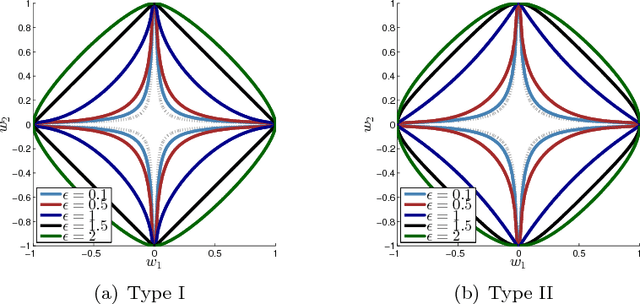
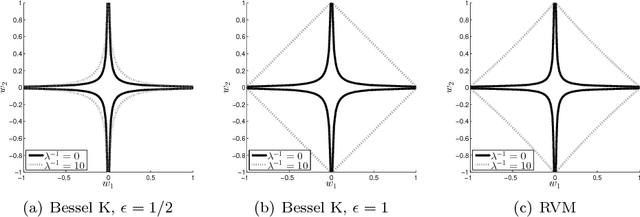
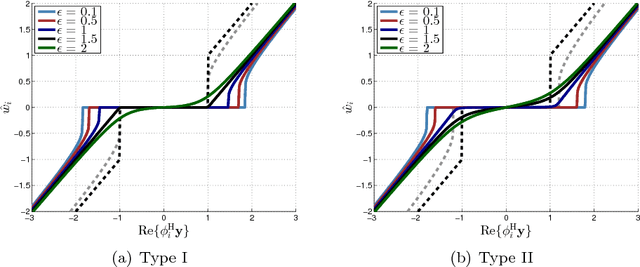

Abstract:In sparse Bayesian learning (SBL), Gaussian scale mixtures (GSMs) have been used to model sparsity-inducing priors that realize a class of concave penalty functions for the regression task in real-valued signal models. Motivated by the relative scarcity of formal tools for SBL in complex-valued models, this paper proposes a GSM model - the Bessel K model - that induces concave penalty functions for the estimation of complex sparse signals. The properties of the Bessel K model are analyzed when it is applied to Type I and Type II estimation. This analysis reveals that, by tuning the parameters of the mixing pdf different penalty functions are invoked depending on the estimation type used, the value of the noise variance, and whether real or complex signals are estimated. Using the Bessel K model, we derive a sparse estimator based on a modification of the expectation-maximization algorithm formulated for Type II estimation. The estimator includes as a special instance the algorithms proposed by Tipping and Faul [1] and by Babacan et al. [2]. Numerical results show the superiority of the proposed estimator over these state-of-the-art estimators in terms of convergence speed, sparseness, reconstruction error, and robustness in low and medium signal-to-noise ratio regimes.
* The paper provides a new comprehensive analysis of the theoretical foundations of the proposed estimators. Minor modification of the title
Message-Passing Algorithms for Channel Estimation and Decoding Using Approximate Inference
Jul 23, 2012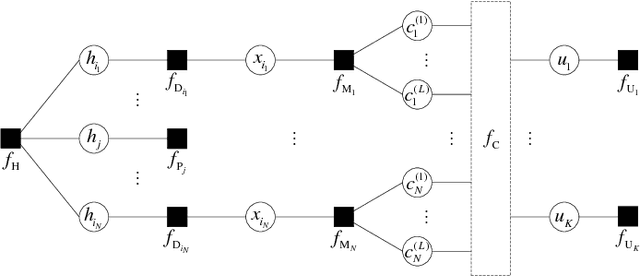
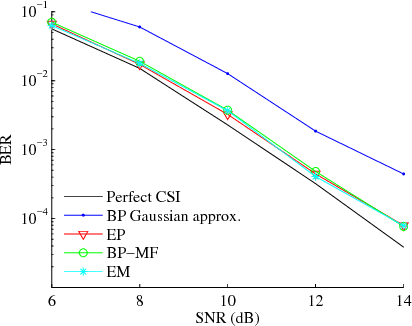
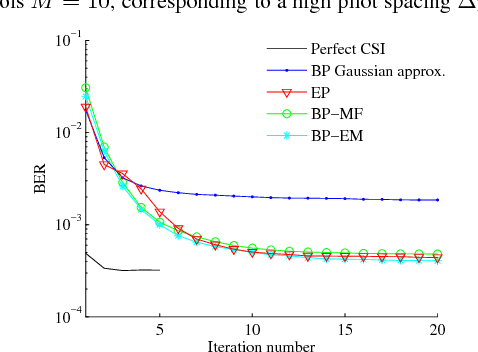
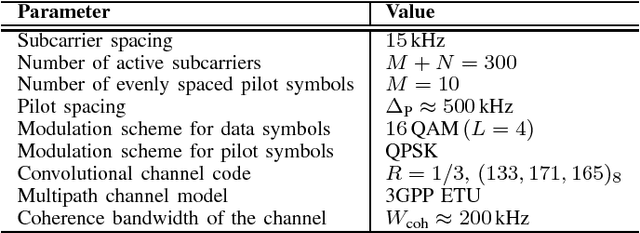
Abstract:We design iterative receiver schemes for a generic wireless communication system by treating channel estimation and information decoding as an inference problem in graphical models. We introduce a recently proposed inference framework that combines belief propagation (BP) and the mean field (MF) approximation and includes these algorithms as special cases. We also show that the expectation propagation and expectation maximization algorithms can be embedded in the BP-MF framework with slight modifications. By applying the considered inference algorithms to our probabilistic model, we derive four different message-passing receiver schemes. Our numerical evaluation demonstrates that the receiver based on the BP-MF framework and its variant based on BP-EM yield the best compromise between performance, computational complexity and numerical stability among all candidate algorithms.
Merging Belief Propagation and the Mean Field Approximation: A Free Energy Approach
Jun 28, 2012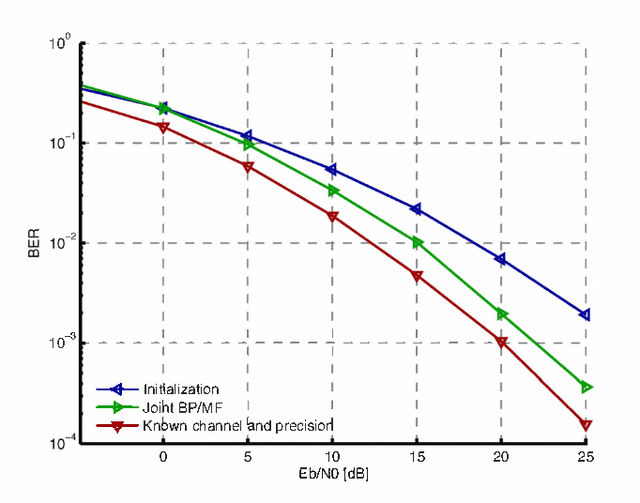
Abstract:We present a joint message passing approach that combines belief propagation and the mean field approximation. Our analysis is based on the region-based free energy approximation method proposed by Yedidia et al. We show that the message passing fixed-point equations obtained with this combination correspond to stationary points of a constrained region-based free energy approximation. Moreover, we present a convergent implementation of these message passing fixedpoint equations provided that the underlying factor graph fulfills certain technical conditions. In addition, we show how to include hard constraints in the part of the factor graph corresponding to belief propagation. Finally, we demonstrate an application of our method to iterative channel estimation and decoding in an orthogonal frequency division multiplexing (OFDM) system.
Distributed Iterative Processing for Interference Channels with Receiver Cooperation
Apr 17, 2012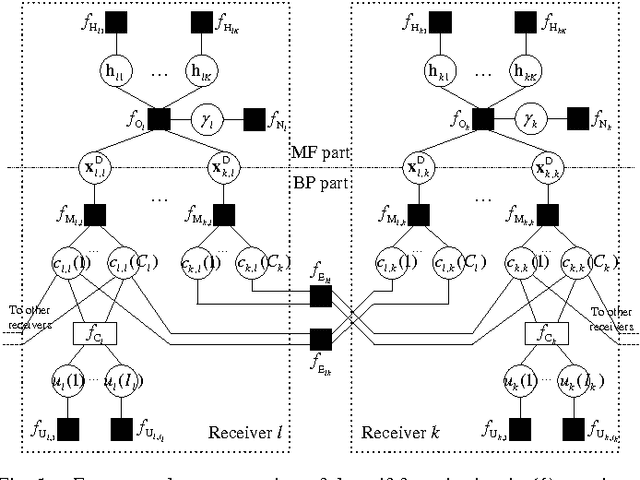
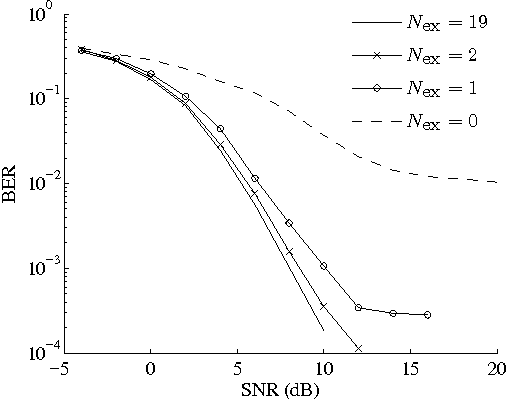
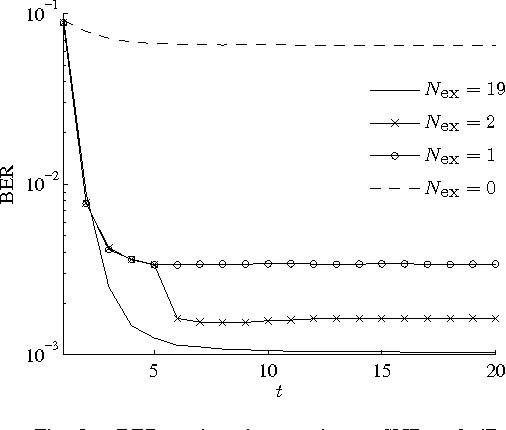
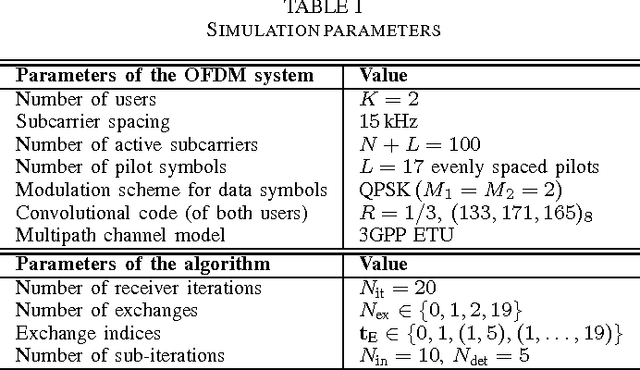
Abstract:We propose a framework for the derivation and evaluation of distributed iterative algorithms for receiver cooperation in interference-limited wireless systems. Our approach views the processing within and collaboration between receivers as the solution to an inference problem in the probabilistic model of the whole system. The probabilistic model is formulated to explicitly incorporate the receivers' ability to share information of a predefined type. We employ a recently proposed unified message-passing tool to infer the variables of interest in the factor graph representation of the probabilistic model. The exchange of information between receivers arises in the form of passing messages along some specific edges of the factor graph; the rate of updating and passing these messages determines the communication overhead associated with cooperation. Simulation results illustrate the high performance of the proposed algorithm even with a low number of message exchanges between receivers.
Application of Bayesian Hierarchical Prior Modeling to Sparse Channel Estimation
Apr 03, 2012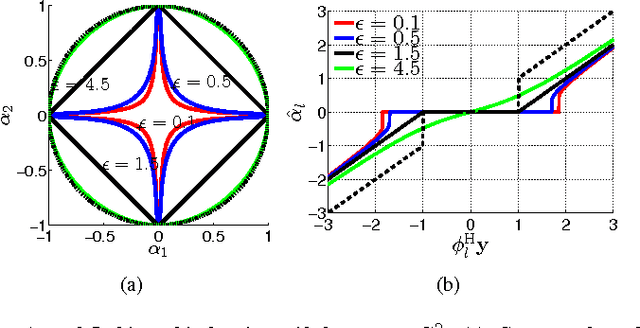
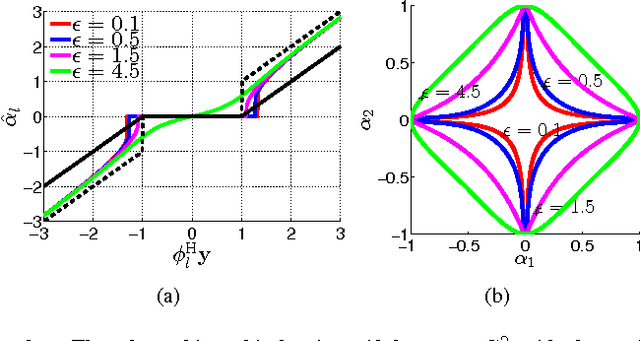


Abstract:Existing methods for sparse channel estimation typically provide an estimate computed as the solution maximizing an objective function defined as the sum of the log-likelihood function and a penalization term proportional to the l1-norm of the parameter of interest. However, other penalization terms have proven to have strong sparsity-inducing properties. In this work, we design pilot-assisted channel estimators for OFDM wireless receivers within the framework of sparse Bayesian learning by defining hierarchical Bayesian prior models that lead to sparsity-inducing penalization terms. The estimators result as an application of the variational message-passing algorithm on the factor graph representing the signal model extended with the hierarchical prior models. Numerical results demonstrate the superior performance of our channel estimators as compared to traditional and state-of-the-art sparse methods.
Receiver Architectures for MIMO-OFDM Based on a Combined VMP-SP Algorithm
Nov 24, 2011
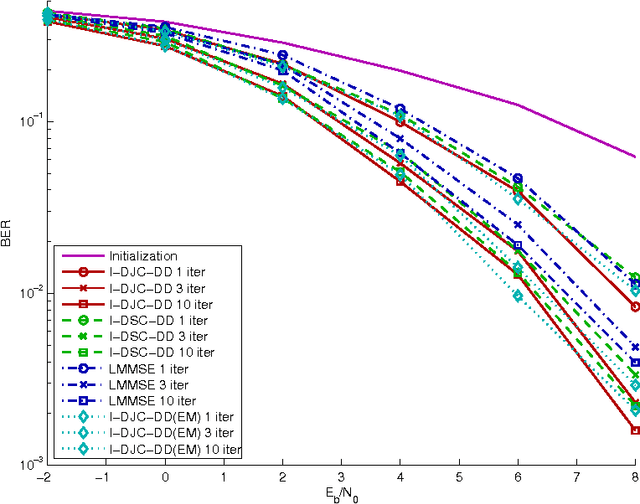


Abstract:Iterative information processing, either based on heuristics or analytical frameworks, has been shown to be a very powerful tool for the design of efficient, yet feasible, wireless receiver architectures. Within this context, algorithms performing message-passing on a probabilistic graph, such as the sum-product (SP) and variational message passing (VMP) algorithms, have become increasingly popular. In this contribution, we apply a combined VMP-SP message-passing technique to the design of receivers for MIMO-ODFM systems. The message-passing equations of the combined scheme can be obtained from the equations of the stationary points of a constrained region-based free energy approximation. When applied to a MIMO-OFDM probabilistic model, we obtain a generic receiver architecture performing iterative channel weight and noise precision estimation, equalization and data decoding. We show that this generic scheme can be particularized to a variety of different receiver structures, ranging from high-performance iterative structures to low complexity receivers. This allows for a flexible design of the signal processing specially tailored for the requirements of each specific application. The numerical assessment of our solutions, based on Monte Carlo simulations, corroborates the high performance of the proposed algorithms and their superiority to heuristic approaches.
 Add to Chrome
Add to Chrome Add to Firefox
Add to Firefox Add to Edge
Add to Edge